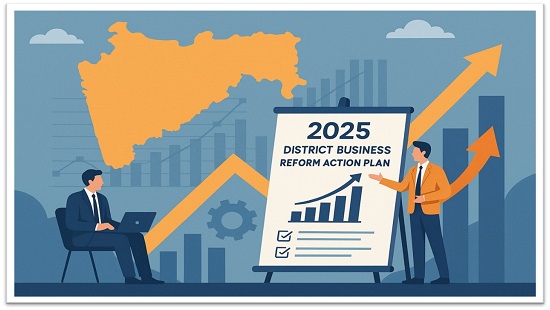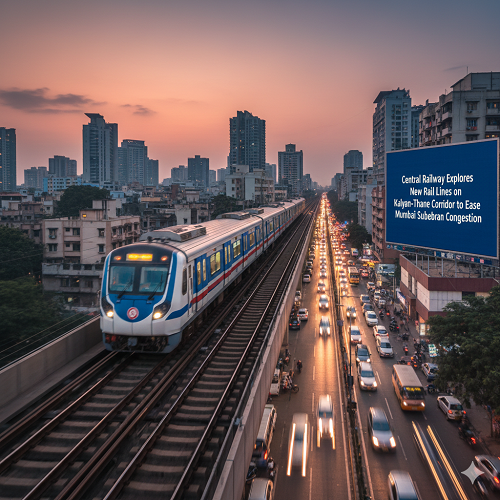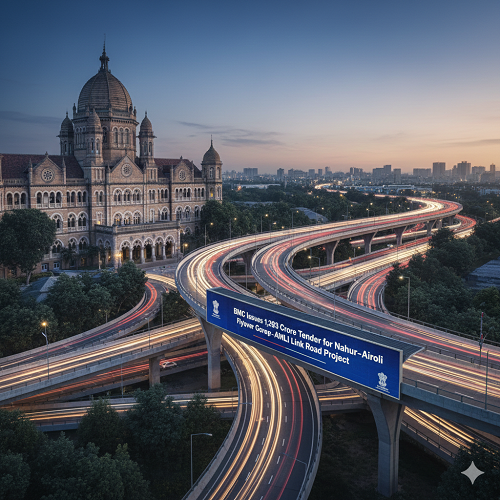
Maharashtra Unveils District Business Reform Action Plan 2025, Setting a New Benchmark for Ease of Doing Business in India
Maharashtra has once again reaffirmed its position as India’s industrial powerhouse with the launch of the District Business Reform Action Plan (DBRAP) 2025, an ambitious framework designed to deepen the ease of doing business across every district. The plan is not merely an administrative exercise, it marks a structural shift in how governance, policy execution, and economic growth intersect at the local level.
At its core, the initiative represents the state’s commitment to democratizing business reforms, moving beyond urban industrial clusters like Mumbai, Pune, and Nashik, and empowering district administrations as growth engines. With 154 targeted reforms to be executed by August 2026, Maharashtra aims to bridge the gap between macroeconomic ambitions and micro-level implementation, creating a more agile, responsive business ecosystem.
This initiative is anchored in a vision of decentralization and accountability. Chief Minister Devendra Fadnavis has outlined a model that grants district collectors greater administrative authority, encouraging data-driven decision-making and faster on-ground implementation. As India competes for global investment, Maharashtra’s DBRAP 2025 signals a critical evolution from centralized policymaking to empowered district-led execution.
Empowering District Collectors for Smarter, Faster Implementation
A defining feature of DBRAP 2025 is the empowerment of district collectors, who are now positioned as catalysts for business reform. The government will conduct ‘Chintan Shibirs’ (reflection workshops) and divisional-level review meetings to align district leadership with reform goals and implementation strategies. By giving collectors more administrative flexibility, Maharashtra intends to accelerate industrial approvals, streamline regulatory interfaces, and reduce bureaucratic lag.
A recent high-level review chaired by CM Fadnavis at the Sahyadri Guest House brought together top state officials, including Chief Secretary Rajesh Kumar, divisional commissioners, and collectors. The meeting underscored the importance of district-level responsiveness and set a clear directive: reform impact must be measurable, timely, and regionally balanced.
Divisional Committees to Drive Industrial Development
To ensure accountability and regional parity, Maharashtra has formed six divisional committees tasked with driving industrial growth. These committees, headed by senior officers such as Dr. Pravin Gedam (Nashik Division), Vijay Suryawanshi (Konkan Division), and Jitendra Papalkar (Chhatrapati Sambhajinagar Division), will submit comprehensive progress reports by December 31, 2025.
Each committee focuses on a specific growth lever, ranging from land bank promotion and industrial resource optimization to streamlining investor facilitation services. This tiered structure ensures that reform outcomes are not just conceptual but operational, with real-time accountability and transparent evaluation.
Maharashtra’s Strong Track Record in Business Reforms
Maharashtra’s performance in the Ease of Doing Business (EoDB) index has consistently set national benchmarks. The state achieved a 99.25% implementation rate in 2024, successfully completing 399 out of 402 reforms. Recognized as an ‘Achiever’ in 2020–21 and a ‘Top Achiever’ in 2022, Maharashtra has built institutional credibility as a reform-oriented economy.
The upcoming EoDB 2024 assessment, with results expected in November 2025, will likely reinforce the state’s leadership. These numbers reflect not just compliance but cultural transformation—an administrative mindset evolving toward efficiency, innovation, and investor confidence
Key Focus Areas and MAITRI 2.0 Rollout
The DBRAP 2025 integrates seamlessly with Maharashtra’s flagship MAITRI 2.0 platform, envisioned as a next-generation single-window ecosystem. The platform will unify application tracking, permit management, payments, inspection systems, grievance redressal, and feedback loops through a single sign-on interface.
Additionally, the reform blueprint targets five core areas: land and building permissions, labour reforms, utility connections, inspection systems, and regulatory simplification. Together, these interventions aim to reduce compliance friction, enhance investor experience, and strengthen Maharashtra’s reputation as a transparent, innovation-driven economy.
Building a Reform-Ready Maharashtra
The success of DBRAP 2025 hinges on one principle—execution with precision. Maharashtra’s move to decentralize reform responsibility from state secretariats to district offices could redefine how business ecosystems evolve in India. By integrating technology, accountability, and leadership capacity at the district level, the state is setting a precedent for scalable governance reform.
If effectively implemented, the initiative could transform Maharashtra into not just India’s most industrially advanced state, but also its most business-responsive one. As global investors seek efficiency, clarity, and speed, Maharashtra’s District Business Reform Action Plan 2025 positions it as a frontrunner in India’s journey toward competitive federalism and sustainable industrialization.





